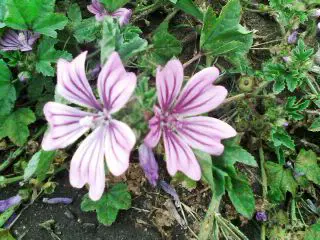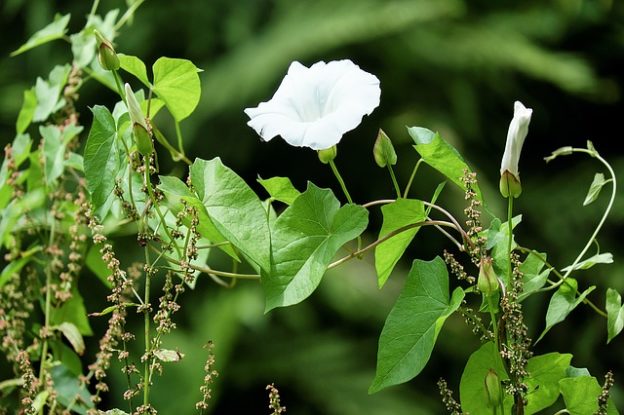If you are a regular visitor to growing-guides.co.uk you will know that I grow organically as much as I am able, but I have been having problems dealing with perennial weeds. So this post is in a way an admission of defeat as any thing else.
Dealing With Perennial Weeds
Most annual weeds can be dug or pulled up and as long as they are not in flower they can be added to the compost bin. Thier roots are usually shallow and they spread by seed distribution so as long as you remove them early enough they don’t become too much of a drama.Perennial weeds however are a bit more of a problem. Perennial weeds spread by both seed distribution and root division.
The Problem With Perennial Weeds

Marshmallow
So perennial weeds spread in two ways, seed distribution and root division. The seed spreading isn’t too much of a problem. As long as you pull them up before they flower and find somewhere to put them where the seedheads can’t develop. I find the best place for this is the bonfire.
The problem is that although you have dealt with the perennial weed at surface level and even if you have dug the roots out as far as you can, they will come back. This is because if you leave just a minute piece of root in the soil the perennial weed will sprout from it.
Perennial weeds store energy in these deep roots and that gives them the ability to re grow even after us gardeners have given all our energy into removing them.
What Are Perennial weeds?
The main Perennial weeds in the U K include
- Bind weed
- Dock Leaf
- Marsh Mallow
- Clover
- Dandelion
- Creeping Buttercup
- Self Heal
- Plantain
- Nettle
- Thistle
There are many others but this is a guide to the most common. Some of these are not technically weeds, they are herbs but by definition a weed is a plant that is growing in the wrong place so for the purposes of this post I will call them all weeds.
How To Deal With Perennial weeds

plantain
Some perennial weeds have deep tap roots and others have roots that can regrow from tiny pieces left in the soil so digging or pulling is not going to achieve long term results. Unfortunately I have found that the best way in fact, the only way to successfully deal with persistant, perennial weeds is to use a patent weed killer.
This goes completely against my beliefs but I’m at my wits end. I can’t keep the plot free from perennial weeds, mainly bind weed and as fast as I dig it up it’s back again.
Solution
I could cover the area in black plastic and leave it for a couple of months but it’s the middle of the growing season and I need the space. So I have decided to use a chemical weed killer.
To make less of a chemical impact on my plot, I have decided to use a contact weed killer. Contact weed killers work by application directly to the leaves of the plant/weed you wish to kill. this will hopefully stop the chemicals from leaching into the soil thus technically keeping my soil organic. After seven days, the weed should be dead roots as well and that should solve the problem.
After care
From then on I will be using a thick mulch, at least eight inches thick to deter any weeds from returning. The added bonus to this is that the mulch will help to keep moisture in the soil, helping my back as I won’t need to water so frequently.

